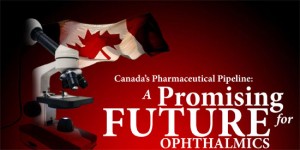With the increase in natural and man-made disasters over the past several years, emergency preparedness has become more essential than ever – and has moved from the back to the front burner for businesses and individuals in high-risk geographical zones and cosmopolitan areas alike.
The ice storm that hit Quebec in 1998, the 9/11 tragedy in 2001 and the floods that deluged Alberta in 2013 all highlighted the need for enhanced and more comprehensive emergency and post-emergency measures for citizens and their businesses.
ARE ECPS PREPARED FOR DISASTERS, NATURAL OR OTHERWISE?
As part of preparation for a forced shut-in, adequate supplies of food and water for several weeks should be maintained. Fire drills, knowledge of first aid, including CPR, and business insurance for natural disasters are also a must.
The United States Federal Emergency Management Agency (FEMA) highlights the fact that, “how quickly your company is back in business following a disaster will depend on emergency planning done today.”
The following are some of the recommendations FEMA makes in its ‘Ready Business’ plan, which involves protecting your employees and your facility:
- Obtain emergency contact information from your employees.
- Designate a telephone number at a location away from your primary facility where employees can call in and leave an“I’m okay” message and receive instructions.
- If you have employees with disabilities or special needs, ask them what assistance they would need in the event of a disaster occurrence.
- Make an Evacuation Plan, as well as a Shelter-in-Place plan. In the event of a transportation accident that releases chemicals into the air, for instance, individuals should shelter-in-place within the building. This requires shutdown of heating, ventilation and air conditioning (HVAC) systems, and the closure of air intakes.
In March 2011, a magnitude-9 earthquake shook northeastern Japan, unleashing a savage tsunami and killing more than 230,000 people. Ophthalmologists used a customized ‘Mission Vision Van’ – a clinic on wheels – to provide survivors with eye exams and medications, and treat a large number of eye infections as the result of contaminated water.
However, a new study has shown that the items most needed in post-disaster relief are replacement eyeglasses, contact lenses and eye drops, underlining the crucial role ECPs can play in post-disaster aid and recovery.
In the wake of Hurricane Sandy, which struck New York and New Jersey in 2012, power outages had an obvious effect on the level of foot traffic as optical retailers and labs scrambled to conduct business. But the greatest concern was how to assist customers with damaged or lost eyewear. Numerous optical firms, some as far away as Texas, rallied to provide much-needed help through replacement eyewear, financial aid and feet on the ground.
In July 2013, a train derailment in the town of Lac-Mégantic in Quebec’s Eastern Townships resulted in the explosion of multiple tank cars carrying crude oil. Forty-two people were confirmed dead and more than 30 buildings in the town centre were destroyed, including two optical stores. Six months after the tragedy, a report published by the Canadian Red Cross noted that, “People affected by the disaster can also receive assistance from the Red Cross for purchasing dental prostheses, hearing aids, glasses and home support equipment. All expenses are covered by the Red Cross.”
One of the things ECPs can do proactively is to recommend that patients who are able to do so keep a back-up pair of eyeglasses or contact lenses on hand, in addition to an extra month’s supply of medications, if possible.
While shelter and food remain at the top of most people’s lists of essentials, re-tracing your daily activities, including your healthcare regimen, can serve as a helpful reminder of health-related items, such as eyewear, that are easily overlooked.











